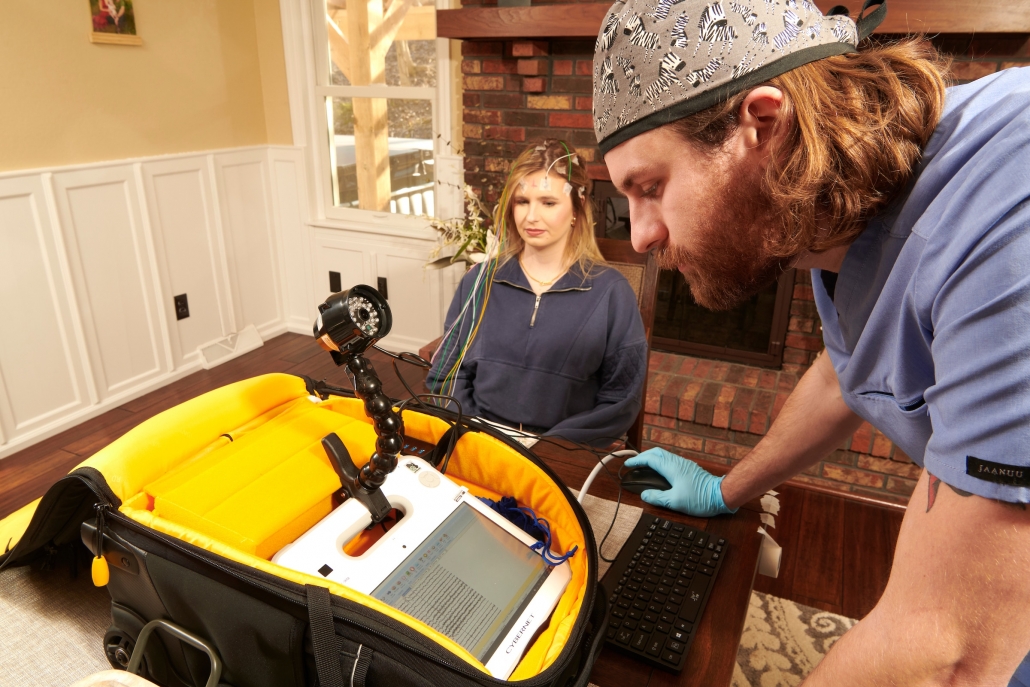Vigilant Monitoring in an EEG Clinical Trial
A Successful EEG Clinical Trial Requires Teamwork and Vigilance
At Lifelines Neuro, we provide 24/7 vigilance monitoring for all recordings for EEG clinical trials. Vigilance monitoring means registered EEG technologists are watching the EEG recordings for the entire duration. This practice is important for a myriad of reasons. Let’s explore some scenarios where vigilant remote monitoring could affect the outcome of a clinical trial with EEG protocol.
Scenario One: Available for Advice and Insight
Let’s say the design of your EEG clinical trial includes a screening EEG for normal brainwave activity. This would be the process to allow entry into the trial. During this screening EEG, there are some questionable brainwaves, like temporal sharp activity. These need to be determined as normal or abnormal. With our vigilance monitoring, we can suggest to the assigned EEG technologist on-site to do a wakefulness test or give orienting questions to help determine if the sharp waves were due to drowsiness, or if they are in fact abnormal temporal activity. This can give the Central Reader better insight into the patient’s wakeful state to correctly read the study. (The Central Reader is the physician responsible for study interpretation for the trial.)
Scenario Two: Ensure Studies are Timely
In this scenario, there is a five-day clinical trial that consists of 48 hours pre-dose (baseline EEG) and 48 hours after dosing to determine if the trial drug causes any brain abnormalities. Within the first 16 hours of the EEG, our technologists could notice some frontal slowing in the subject’s EEG. This would allow technologists to escalate to the Site Principal Investigator (PI) or Central Reader to log on, (in real-time) to review the study. If in fact, the brainwaves are abnormal, then we just prevented the trial staff from dosing someone that had abnormal brain activity and shouldn’t be allowed entry into the trial.
Scenario Three: Reduce Stress for Site Staff
Many of the sites have limited EEG staff to run day-to-day operations and tests, as well as running/monitoring study patients. On top of that, imagine a trial that has multiple subjects being recorded at the same time. The site technologists are responsible for a lot! Hooking up and removing electrodes, performing alternate testing, and electrode maintenance throughout the duration of the trial included. What a stressful experience!
Our monitoring can help assist these sites to continue their day-to-day operations, while the study subjects are still being monitored appropriately for adverse effects or abnormalities. Because of our monitoring and assistance, if an abnormality is seen, we could call for the PI to read and ultimately make the decision to intervene with medicine for seizure activity, drop the subject from the trial, or take other appropriate actions. Our vigilance monitoring can help assist these sites with performing quality EEG recordings. Our team can also be reviewing for abnormalities that, if present, could potentially flag a participant for removal from the trial.
Scenario Five: Catching Mistakes Before (or as) they Happen
Things don’t always go according to plan. Our vigilance monitoring also helps reduce mistakes in conducting the EEG. Due to many trials having a blinded EEG reader, we can ensure there is no patient identifying information entered when starting the EEG. If this isn’t done, it could cause unblinding. We can also assist in real-time if there is a camera, internet, or hardware issue. This helps lessen the burden on the site of trying to troubleshoot a new EEG system.
Scenario Six: Providing Technical Support during an EEG Clinical Trial
What if you had an issue and didn’t know how to fix it yourself? Don’t worry and reschedule the study! We use a remote-control software called TeamViewer that allows us to have full access to the EEG system and control the computer (if needed) to help troubleshoot problems. TeamViewer offers a chat feature with optional microphone access for easy communication from our technologists to the sites. This makes troubleshooting problems and answering questions easy. From reminders on how to start the EEG, to how to complete study-specific documentation – it is our goal to help sites be comfortable with the EEG hardware, software, study protocol, and all other coinciding documentation.
Our experienced clinical trials team is vigilant and ready. If you have questions or would like to reach out to a member of our clinical trials team for more information about your next clinical trial, click here.






